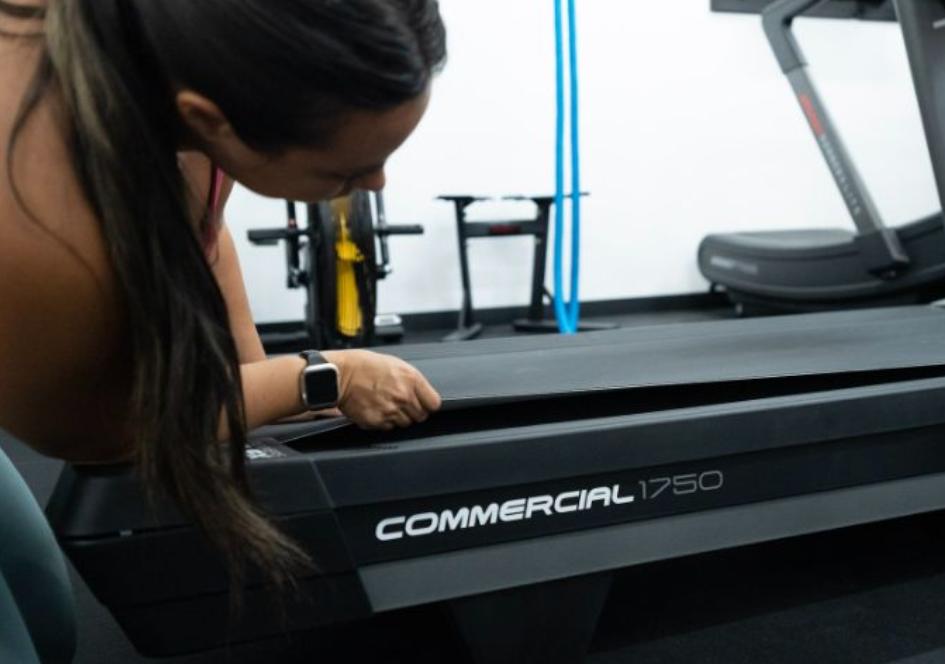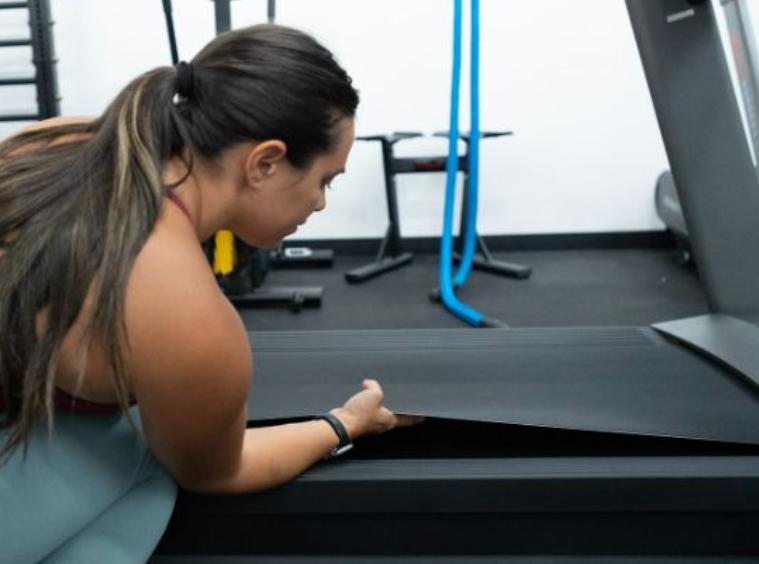Treadmill belt slipping is a common issue that can disrupt your workout and cause unnecessary wear on your machine. Knowing how to fix treadmill belt that slips is essential for maintaining the performance of your equipment. Whether you’re a seasoned runner or someone who enjoys a daily walk, addressing belt slippage quickly can prevent further damage and ensure a safe exercise environment. This guide will walk you through the reasons behind belt slippage, how to identify the problem early, and the steps needed to fix it. By following these simple instructions, you’ll be able to restore your treadmill to optimal working condition and enjoy a smoother workout experience. Let’s dive into how to fix a treadmill belt slipping, starting with understanding why it happens.

Why Does the Treadmill Belt Slip?
Common Causes of Belt Slippage
Several factors can cause your treadmill belt to slip, leading to an uneven or unstable running surface. The most common cause is incorrect tension. If the belt is too loose, it won’t have enough grip on the rollers, causing it to slip. Over time, the belt may also stretch, leading to slippage. Another cause can be misalignment, where the belt shifts to one side, reducing traction. Additionally, a lack of lubrication between the belt and the deck can increase friction, making it difficult for the motor to maintain consistent speed. Understanding these causes is the first step in learning how to fix a treadmill belt that slips.
How to Identify Slipping Issues Early
Recognizing the signs of a slipping treadmill belt early can save you from costly repairs. One of the first indicators is a sudden change in the speed or feel of the belt during use. You might notice that the belt hesitates or lags when you step on it, or you hear unusual noises like squeaking or thudding. Visually, you might see the belt drift to one side, or notice uneven wear patterns. To check for slippage, stand at the edge of the belt while the treadmill is on a low setting. If the belt slips or shifts underfoot, it’s time to take action. Identifying these issues early allows you to fix the treadmill belt before it leads to more serious problems.
How to Tighten a Treadmill Belt Correctly?
Tools You’ll Need for the Job
To fix a treadmill belt that slips, you’ll need a few basic tools. A hex key or Allen wrench is essential for adjusting the tension bolts, which are typically located at the rear of the treadmill. You’ll also need a screwdriver to remove any panels or covers that may obstruct your access to the tension bolts. Having a lubricant designed specifically for treadmill belts is also important, as you’ll want to apply this after making adjustments to ensure smooth operation. A cloth or towel can help clean any debris or dust from the belt and deck before you begin. With these tools in hand, you’re ready to tighten the treadmill belt and eliminate slippage.
Step-by-Step Guide to Tightening the Belt
1.Turn off and unplug the treadmill. Safety first! Make sure the treadmill is completely powered off.
2.Locate the tension bolts. These are usually found at the end of the treadmill deck near the rear roller.
3.Use the hex key. Insert the hex key into the tension bolts and turn them clockwise to tighten the belt. Start with a quarter turn on each side to ensure even tension.
4.Test the tension. Turn the treadmill back on and test the belt at a low speed. If it still slips, repeat the process, making slight adjustments until the belt feels secure.
5.Re-lubricate the belt. After tightening, apply a treadmill-specific lubricant to reduce friction and wear.
Following these steps will help you fix the treadmill belt and restore its proper function.
How to Align a Treadmill Belt for Optimal Performance?
Signs Your Belt Is Misaligned
A misaligned treadmill belt can cause uneven wear and increase the risk of slipping. Common signs of misalignment include the belt drifting to one side during use, uneven gaps between the belt and the treadmill deck, and unusual noises when the treadmill is running. You may also notice that one side of the belt shows more wear than the other. These signs indicate that the belt is not centered, which can lead to performance issues and potential safety hazards. Recognizing these signs early allows you to fix the treadmill belt before further damage occurs.

Step-by-Step Guide to Realigning the Belt
1.Turn off and unplug the treadmill. Always start with safety.
2.Locate the adjustment bolts. These are usually near the rear of the treadmill, next to the tension bolts.
3.Adjust the alignment. If the belt is drifting to the right, turn the right bolt clockwise and the left bolt counterclockwise. If it’s drifting to the left, do the opposite.
4.Test the belt. After each adjustment, run the treadmill at a low speed to check the alignment. Continue making small adjustments until the belt is centered.
5.Re-check the alignment periodically. After realignment, monitor the belt for a few sessions to ensure it stays centered.
This process helps you align the treadmill belt correctly, improving performance and safety.
Preventative Maintenance Tips to Avoid Slipping
Regular Inspection and Cleaning
Regular inspection and cleaning are crucial to prevent treadmill belt slippage. Dust, dirt, and debris can accumulate on the belt and deck, increasing friction and leading to slippage. Once a week, unplug the treadmill and wipe down the belt with a dry cloth to remove any dirt. Inspect the belt for signs of wear or damage, and check the deck for any rough spots or debris. Keeping the treadmill clean ensures that the belt moves smoothly and reduces the risk of slipping. Regular maintenance helps you avoid the need to frequently fix the treadmill belt, saving time and effort in the long run.
Lubricating the Treadmill Belt Properly
Proper lubrication is key to preventing treadmill belt slipping. A well-lubricated belt reduces friction between the belt and the deck, allowing the treadmill to operate smoothly. Use a treadmill-specific lubricant, which is typically silicone-based, and apply it every three months or as recommended by the manufacturer. To lubricate, lift the belt slightly and apply a thin layer of lubricant between the belt and the deck. Run the treadmill at a slow speed for a few minutes to evenly distribute the lubricant. Avoid over-lubricating, as this can cause the belt to slip. By maintaining proper lubrication, you can fix a treadmill belt that slips and extend the life of your equipment.
Conclusion
Knowing how to fix treadmill belt that slips is essential for maintaining your treadmill’s performance and your safety. By understanding the causes of belt slippage, identifying issues early, and following the correct steps to tighten and align the belt, you can ensure a smooth workout experience. Regular maintenance, including cleaning and lubrication, is also key to preventing future problems. By taking these steps, you’ll keep your treadmill in top condition and avoid the frustration of unexpected slippage during your workouts. Implement these tips, and you’ll enjoy a more reliable and enjoyable exercise routine on your treadmill.
FAQ
1. What should I do if the treadmill belt keeps slipping after tightening?
If the belt continues to slip after tightening, it might be overstretched or the tension adjustment was uneven. Check for wear and consider replacing the belt if necessary. Also, ensure both sides of the belt are equally tightened. Misalignment can also cause slipping, so recheck the alignment following the steps mentioned above.
2. How often should I lubricate my treadmill belt to prevent slipping?
To prevent slipping, lubricate your treadmill belt every three months or according to the manufacturer’s guidelines. Regular lubrication reduces friction between the belt and the deck, ensuring smooth operation and prolonging the life of the treadmill.
3. Can a worn-out treadmill belt be fixed, or does it need replacement?
A worn-out belt usually needs replacement rather than repair. If the belt shows signs of fraying, thinning, or uneven wear, it’s time to replace it. Continuing to use a damaged belt can lead to more significant issues with the treadmill, including motor strain and increased risk of slipping.
